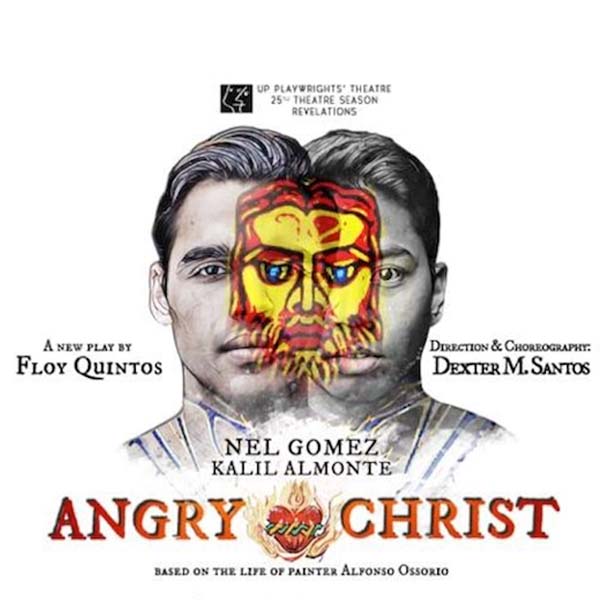“The Angry Christ” is a play by Floy Quintos that follows the creation of Alfonso Ossorio’s iconic painting – from conceptualization up to the reveal of the finished obra maestra.
The story opens with a short background of the painting and a brief summary of Ossorio’s childhood before he came to the family sugar mill in Negros.
Most of the play follows his process of creation, highlighting his struggle with his sexuality (in line with his religious beliefs), the reconciliation between his personal style and the norms of local religious imagery and the white man-little brown man relationship with his assistant.
The topic of the painting aside, the play focuses on its reveal and its potential to move its viewers. In fact, the play almost functions as a series of reveals, each one staged with a different performer/viewer pairing.
The art historian, who discusses the painting with the audience, does the first reveal. She shows the painting in segments and includes the context of its artist and the circumstances of its creation.
The second set of reveals is by Alfonso Ossorio himself. He shows his drafts to Anselmo, his assistant, whose feedback is eventually shaped by his close relationship to him.
The third reveal is again by Alfonso. He reveals the final draft to his brother, the countess, the parish priest and so on. Out of the reveals, this is the least memorable to me; Nel Gomez’s acting was just much more memorable than the actual work.
The last reveal is basically where the work assembles itself through multi-media effects before Alfonso walks off the stage. At this point, my thoughts were still with Alfonso and his latest interaction with Anselmo.
I will be honest and say I was so overwhelmed by the affective dialogue and the acting that I was not moved by the artwork itself.
I felt a bit disappointed that the play had spent so much time building up the reveals and yet it did not quite succeed in makeing me appreciate the painting. It wasn’t until weeks later that I had the encounter the play wanted its audience to have.
I was scrolling through Facebook and came across an article regarding “The Angry Christ.” I paused at the cover photo; it was a picture of the actual painting in the church in Negros.
There it was in its glory – no fancy graphics, no affective acting, just the painting in pleasant lighting.
What struck me most were the eyes of the Lord and His outstretched hands. He had a brutal look and lacked the usual kindness that traced the face of Christ.
He looked angst-ridden, soured and disillusioned by the harsh scrutiny and wrongs done to Him. He looked like he had had enough. Perhaps a more fitting title would be “The Embittered Christ.”
Despite all this, however, His arms are still outstretched, unabashedly offering the gift of forgiveness even to those who have forsaken Him. His eyes, although severe in His demand for obedience and metanoia, are not without a touch of love. He may not be a magnanimous Christ, but He is a human Christ, truly the Word made flesh. He is the covenant of the Lord fulfilled.
The painting was surprisingly arresting, even from the small screen of my phone. I didn’t even bother to read the article.
After I closed the app on my phone, I sat back a bit and thought about how Alfonso Ossorio (in the play at least) wanted so badly for the painting to be affective. It was a goal that had caused much internal struggle.
I wonder how he would feel about the painting now, since it can still be so moving decades after he made it. Was it worth facing many of his inner demons for?
Categories
‘The Angry Christ’ that moved me
